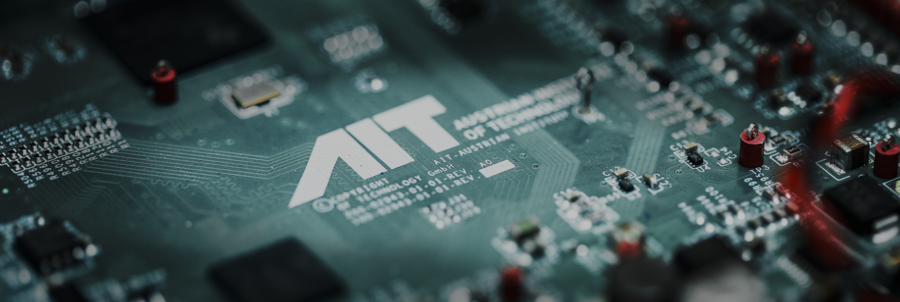The aim of the European Lighthouse Project Ruggedised, funded under the Horizon 2020 programme, is to transform selected urban districts in Rotterdam, Glasgow and the Swedish Umeaͦ to low-energy areas with a high quality of life, based on innovative technologies.
As part of the project, a delegation from Umeå visited Vienna and the AIT from 15 to 17 February.
Starting with an introduction about Vienna (some figures on location, main statistical figures, urban development strategy and administrative structure), Klaus Kubeczko and Klaus Steinnocher presented the AIT and current work, with a focus on innovation management and smart city projects. Herbert Hemis presented insights into the MA20 and integrative energy planning of the city of Vienna and introduced the project Urban Learning, which aims to mainstream and institutionalize integrative urban energy planning within city administrations. During a site visit at Simmering there was the chance to learn about the European Smart City Lighthouse Project Smarter Together, which will prepare the ground for large-scale replication and ensure an in-depth knowledge transfer about setting up of smart city business models and user-centric innovation in order to contribute to positive societal dynamics.
The second day of the visit had its focus on the Seestadt Aspern (240-hectare project area) as one of Europe’s largest urban developments. Nikolaus Summer (City of Vienna, communications – project management Seestadt Aspern) presented the planning and development process, focusing on cooperation with stakeholders and its embedding into Vienna’s strategic urban development plans as well as developing local businesses in the new urban area. Furthermore, Reinhard Brehmer, managing director of Aspern Smart City Research, demonstrated their most innovative and sustainable energy efficiency showcase. Apart from size and structure of the research company (utilities and industry with close ties to the City of Vienna), it is above all the integrative approach that stands out. Real data is used for research on complex correlations and on integrated elements/components.
On the third day, the visit concluded with a presentation by Christian Wurm about Innovative Vienna 2020, which is a strategy for innovation in the broadest sense of the term. In this respect, innovation comprises all new approaches in thinking and acting, with due consideration of the context in terms of time, topic and social setting. The Innovative Vienna 2020 strategy carries forward the contents of Vienna’s first RTI strategy, which was called 'Vienna thinks the future', as well as making a major contribution towards achieving the objectives of the Smart City framework strategy.
Developing the strategy took from mid-2014 to mid-2015, with the Department for Economic Affairs, Labour and Statistics (MA 23) of the Vienna City Administration supervising activities in terms of contents and organization. The delegation was particularly interested in how to handle innovation in terms of administration and citizens’ involvement.
Gudrun Haindlmaier (AIT Center for Innovation Systems & Policy): “It was inspiring to discuss ways of sustainable urban growth for two cities different in size and density like Vienna and Umeå. The mutual learning process was enriched by very interesting site visits in Vienna showing a broad variety of instruments and approaches to innovative urban development.”
Project website: www.ruggedised.eu



![[Translate to English:] Umea-Delegation at Simmering](/fileadmin/_processed_/2/5/csm_04_Umea-Delegation__c__Gudrun_Haindlmaier_de5186b787.jpg)
![[Translate to English:] Umea-Delegation at Seestadt Aspern](/fileadmin/_processed_/a/a/csm_04_Umea-Delegation__c__Florian_Hainz_84a252cd45.jpg)
![[Translate to English:] Gudrun Haindlmaier](/fileadmin/_processed_/7/c/csm_04_Gudrun_Haindlmaier2__c__Ruggedised_a9a3ffc9f5.jpg)